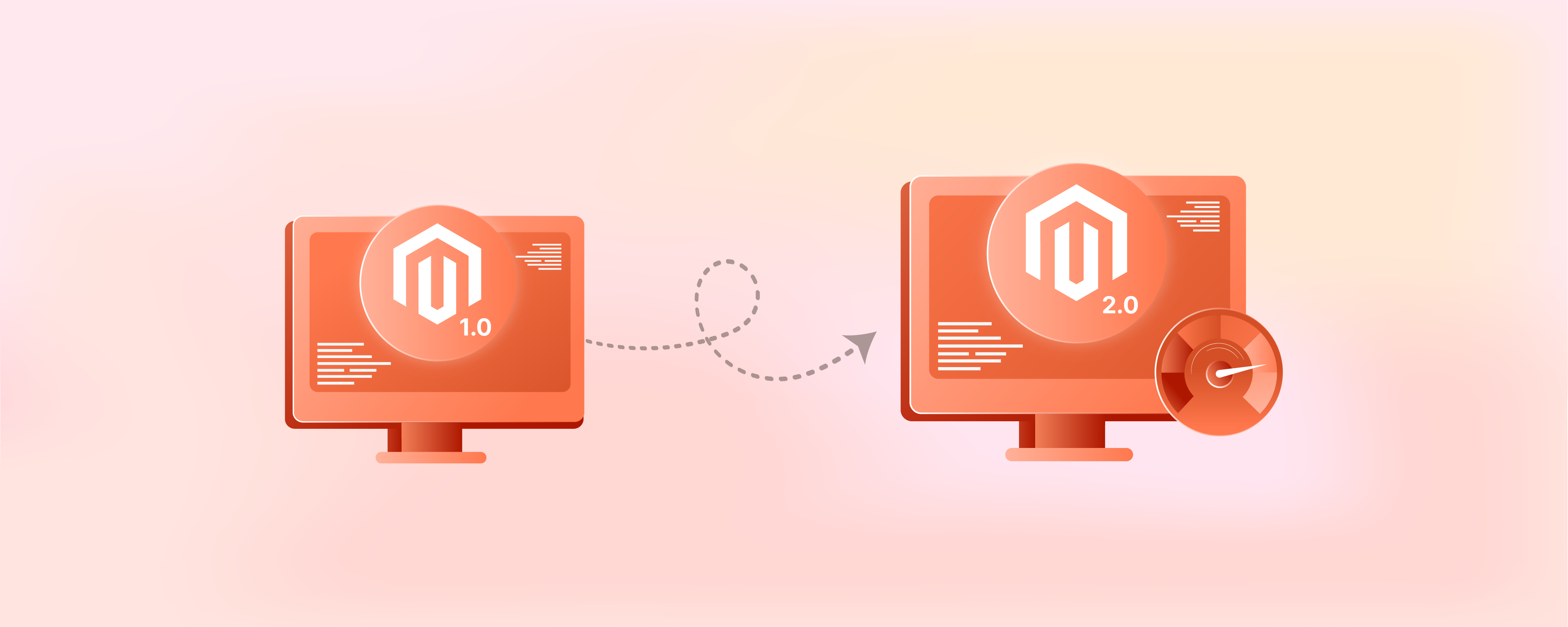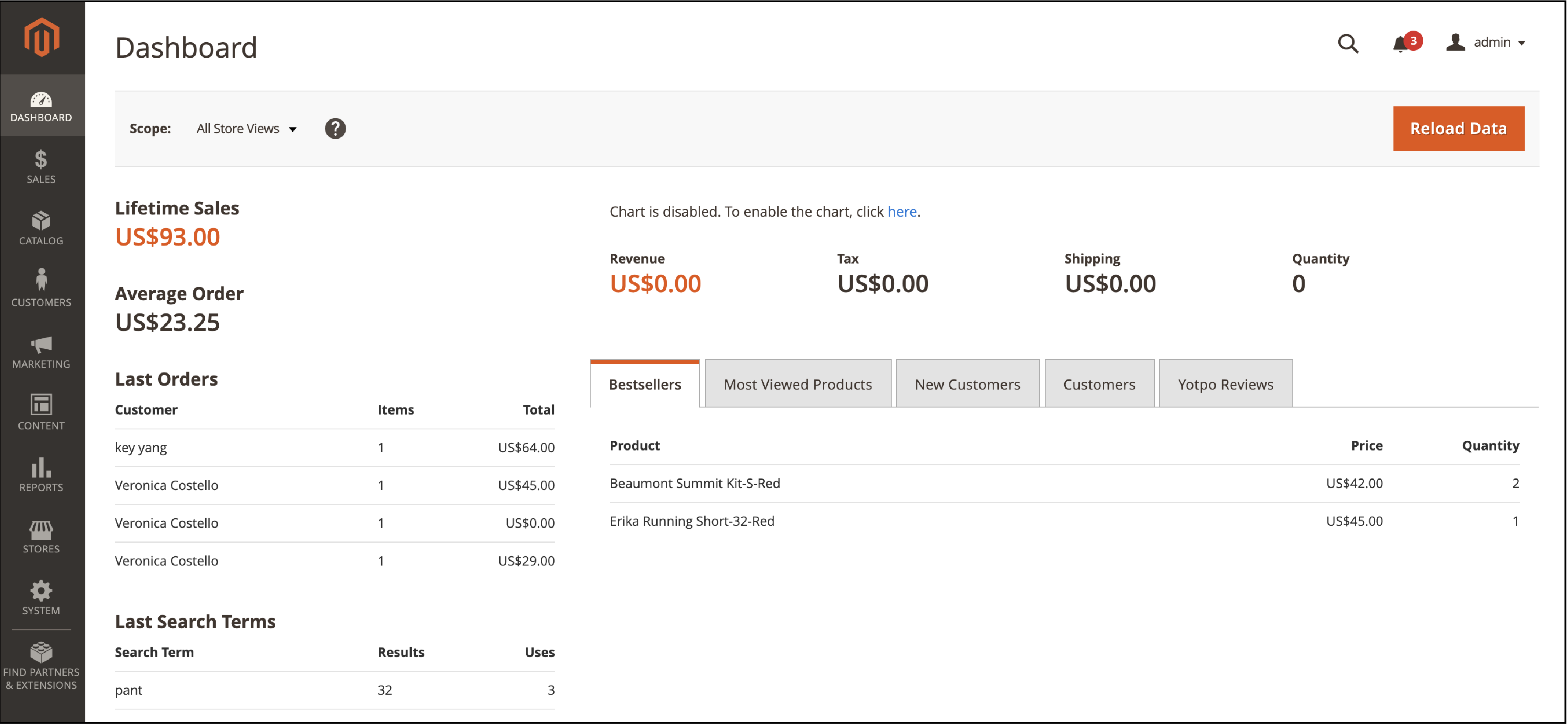
Best Magento 2 Web Hosting: Why Upgrade from Magento 1 to Magento 2
With the limited features of Magento 1, one must upgrade to the best Magento 2 web hosting. It is best for merchants seeking to maintain competitiveness and meet the evolving demands of their customers. In this article, we will explore the benefits and process of upgrading from Magento 1 to Magento 2.
Key Takeaways
- Understand the importance of upgrading from Magento 1 to Magento 2.
- Learn about Magento 2 web hosting and its optimized features.
- Discover the upgraded features like Ajax add-to-cart, enhanced checkout, and support for product videos.
- Explore the essential stages of Magento 2 migration.
What is Magento 2 Web Hosting?
Magento 2 web hosting refers to the hosting services specifically optimized and configured to support e-commerce websites built on the Magento 2 platform. Magento 2 hosting provides ample resources and finely tuned configurations to meet the unique platform's requirements.
Features like flexible resource allocation, robust security measures, and high availability infrastructure. It helps ensure higher performance, reliability, and security for online stores. Managed services, including automated backups and technical support, streamlines server management and operation.
Why Should You Upgrade from Magento 1 to Magento 2
1. Architecture
Magento 2 is compatible with updated versions of Apache, NGINX 1.7 or higher, MySQL, PHP, Composer, Symfony, and CLI. It also offers default support for Varnish, Memcached, and Redis. These enhancements notably enhance performance and ensure compatibility with the latest PHP version.
Magento 2 leverages PHP 7, a substantial advancement from Magento 1's PHP 5. This upgrade alone delivers faster load times, smoother operations, and enhanced security measures.
2. Security

Users prioritize the security of their data and are hesitant to engage with ecommerce platforms they don't trust for online purchases. Apart from performance enhancements, the latest update focuses on strengthening Magento security and stabilizing the system. For example, the implementation of password hashing algorithms like SHA-256 to prevent dictionary attacks.
Magento 2 also supports the fraud protection system Signifyd. It identifies and eliminates orders that seem to be scams and offers 100% chargeback protection.
3. Performance

The homepage, category pages, and product pages of Magento 2 load in less than 1.5 seconds. Additionally, Magento 2 incorporates various new technologies to optimize page delivery, reduce server response times, and streamline backend operations.
-
Ajax Cart: Ajax Cart uses JavaScript to add products to the customer cart without reloading the entire page. This feature aims to deliver a more responsive and user-friendly experience for buyers.
-
ElasticSearch: The default search engine has been replaced by ElasticSearch for Enterprise Edition. The configuration and customization of ElasticSearch enhance search functionalities and lower development fees.
-
Advanced Caching Mechanisms: Caching systems store frequently accessed page elements to deliver them more rapidly to shoppers. Magento 2 introduces an enhanced caching system and offers native support for caching technologies like Varnish.
-
Hosting Environment Enhancements: Particularly in the Enterprise Edition, Magento 2 introduces new features and functionalities to distribute demand across hosting infrastructure. It helps manage large traffic spikes effortlessly.
4. Practical Admin Interface

Admin navigation was a bit complicated in Magento 1. The users only who were already adept at using complex eCommerce store interfaces were capable of operating it efficiently.
However, in Magento 2, the admin interface has been simplified. Now even a newbie will find it easier to become handy with the navigation without the help of developers.
5. Easier Product Uploads and Enhanced Customization
Magento 2 streamlines the process of product uploads with a step-by-step guide to help the admins. Additionally, users can now enrich product listings by adding videos and photos. It enhances the visual appeal and interactivity of the product gallery for customers.
Magento customization capabilities are significantly amplified. Magento 2 enables businesses to keep track of their customers' past preferences. It helps them offer tailored offers and discounts based on individual interests and behavior patterns.
6. Database Segmentation

In Magento 1, a single database serves customers, admins, and developers alike. It leads to database overload. Consequently, a heavy load at the admin’s end could impact the customer experience, affecting the overall user interface.
Magento 2 introduces a split database solution comprising three distinct categories:
- Product Data
- Checkout
- Orders.
This segmentation optimizes website scalability by segregating databases. It also prevents any adverse effects they may have on one another.
7. Upgraded Add-to-cart

Magento 1's add-to-cart process required page reloading each time a customer added a product. This leads to slow-loading pages and increased bounce rates.
However, Magento 2 introduces the 'Ajax add-to-cart' functionality. It eliminates the need for page reloading every time the customer adds a new product to the Magento 2 shopping cart.
8. Administrative Improvements
Magento 2 includes several improvements to enhance administrative tasks and efficiency.
Enhanced Product Creation: The new step-by-step product creation process adds products to your store 4 times quicker than to Magento 1.
Enhanced Data View and Filtering:
- Magento 2 features an advanced data grid view in the admin panel.
- This grid allows complete customization on the attributes displayed in the grid view, such as a product list. It helps meet all the requirements without the help of developers.
- It ensures clear and uncluttered interfaces and allows users to view relevant data easily.
- You can also filter data according to the attributes added to your data view.
Data Safeguards: In Magento 1, a single admin was allowed to manage product data at one time. This poses problems for larger websites with many admin users. Magento 2 has included safeguards for product data management, enabling many admins to handle product data simultaneously. This feature enhances team efficiency and keeps the store items up-to-date.
Support for Product Videos: Magento 2 natively supports videos from YouTube or Vimeo. It gives businesses a precious chance to merchandise their products.
9. Enhanced Checkout
The checkout process is simpler with Magento 2 than Magento 1. It encourages customers to shop more and gradually increases conversion rates.
- Shoppers can now open an account after ordering rather than during checkout. This makes the registration simpler.
- Each step of the checkout process includes order information to enhance the overall customer experience.
- With fewer confusing options and forms, shoppers can focus on completing the checkout process, leading to increased conversions.
- The order summary in Magento 2 includes product images. This reduces ordering errors, minimizes returns, and instills confidence in customers.
10. Dashboard
The updated dashboard is easy and user-friendly since it efficiently organizes the primary functions available for the admins to manage.
However, it has a steep learning curve because of the extensive range of functionalities available to the admins.
Customers can configure products, customize data grids, and streamline product creation processes 4 times faster than before.
11. File Structure
The revamped file structure in Magento 2 provides developers with convenient access to templates, layouts, JavaScript, and CSS files. It facilitates customization without changing site functionality.
12. Premium Quality Extensions

Though Magento 1 also has a wide range of extensions available. Installing them takes a lot of time, even for the developers. Furthermore, the conflict between extensions often required manual resolution. It consumes considerable time and cost.
Magento 2 allows extensions to overlap core code rather than override it. This streamlined approach simplifies installation and customization and modifies front-end development and functionality. It leverages modern web technologies like HTML5, Less, require.js, and CSS3 for improved front-end development.
13. Payment Gateways

Magento 2 simplifies payment gateway integration by offering a variety of trusted options like PayPal, Braintree, and Authorize.net.
It is conveniently available without any headaches when searching for third-party extensions. It no longer asks for unnecessary information, such as billing addresses, and streamlines the checkout process.
How To Upgrade From Magento 1 to Magento 2
Magento 2 migration consists of four essential stages:
- Theme Migration
- Extension Migration
- Customizations
- Data Migration
1. Theme Migration
The theme migration process in Magento 2 involves adapting or creating new themes. The newly created themes must align with the platform's updated technology and standards. Magento 1 themes cannot be directly migrated to Magento 2.
The advanced tools and methodologies of Magento 2 help create visually appealing and responsive themes. This stage requires developers to first analyze the design elements and functionalities of existing Magento 1 themes.
Then rebuild or customize them to meet Magento 2 requirements. You must ensure that the new themes are responsive and optimized for performance. It should provide an enhanced user experience across various devices and screen sizes.
Merchants can develop custom themes tailored to their specific branding and functionality needs. They might also choose to opt for ready-made Magento 2 themes available from reputable sources.
2. Extension Migration
Extensions are essential components that provide new features and extend the functionalities of Magento stores. The next step in the Magento migration process is to evaluate whether the existing Magento 1 extensions are compatible with Magento 2.
Some extensions may have direct counterparts or updated versions compatible with Magento 2. Others may require custom development or replacement with alternative solutions. Integrating Magento 1 extensions into Magento 2 may pose severe compatibility issues. Developers may need to refactor or modify existing extensions to ensure seamless integration with Magento 2. It helps maintain consistent performance and security standards.
Merchants should assess their current extension usage, identify essential functionalities, and explore available options available in the Magento Marketplace. You must install only the relevant extensions that are available and required for your Magento 2 stores.
3. Customizations
Many Magento 1 stores have customizations tailored to their unique business requirements, such as:
- Custom modules
- Extensions
- Integrations
- Third-party systems
During the migration process, merchants need to review and assess these customizations to determine their compatibility with Magento 2. Custom code may need to be refactored, updated, or rebuilt to align with Magento 2 architecture and coding standards.
This stage requires careful planning and collaboration between merchants, developers, and solution providers. It ensures that custom functionalities are successfully migrated and continue to meet business needs in the Magento 2 environment.
4. Data Migration
The last action to perform during the Magento migration process is to move your Magento 1 settings and data to Magento 2. This includes:
- Customer data
- Product catalogs
- Orders
- Inventory
- Configuration settings
Magento has officially released Magento 2 data migration tools and scripts to ease up the Magento migration process for storing data and settings. It helps migrate all the critical data to Magento 2 in a hassle-free manner.
Merchants need to carefully plan and execute data migration to minimize disruptions to business operations. It's essential to conduct thorough testing and validation to ensure the accuracy and integrity of migrated data.
Merchants may need to address data mapping, transformation, and compatibility issues. It helps ensure seamless continuity of business processes in Magento 2.
FAQs
1. Why do I need Magento 2 web hosting?
Magento 2 web hosting offers features like flexible resource allocation, enhanced security measures, and managed services. It is essential for ensuring optimal performance, reliability, and security for your online store.
2. What features should I look for in Magento 2 web hosting providers?
When selecting a Magento 2 web hosting provider, you must consider several factors. This includes server performance, security measures, scalability options, customer support, and pricing plans.
3. What kind of server resources does Magento 2 hosting require?
Magento 2 hosting typically requires sufficient server resources to handle the demands of an e-commerce website. This includes CPU, RAM, storage space, and bandwidth.
4. Is Magento 2 hosting suitable for small businesses?
Magento 2 hosting can be suitable for small businesses. It's important to choose a hosting provider that offers a hosting plan aligning with your budget and requirements.
5. Can I customize my Magento 2 hosting environment?
Many Magento 2 hosting providers offer customizable hosting environments. It allows you to tailor your server configurations to meet your specific requirements.
Summary
Explore the benefits of upgrading from Magento 1 to the best Magento 2 web hosting, including optimized web hosting features. This article covered the essential steps of Magento 2 migration and its advantages. Check out Magento hosting services to enhance the features of your Magento store and make it more effective.


